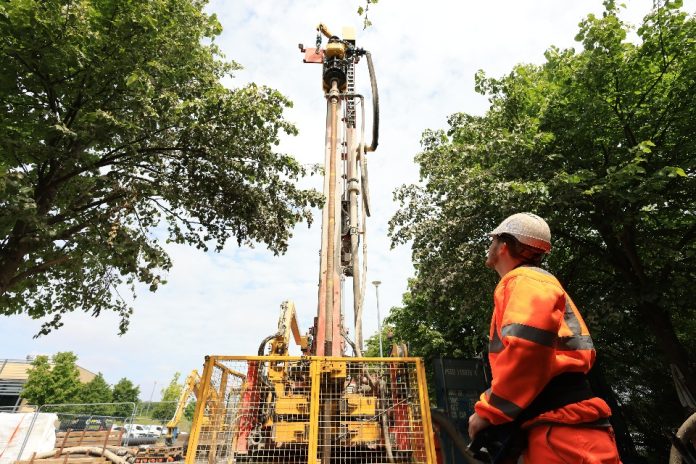The Gateshead Mine Water Heat Living Laboratory, a groundbreaking initiative led by the Mining Remediation Authority, marks a new chapter in the UK’s journey toward sustainable energy and net zero.
Located in the North East of England, this pioneering project is the first of its kind globally, providing an unprecedented opportunity to study thermal and hydrogeological behaviour between multiple operational mine water heat schemes.
Leader of the project, Dr Fiona Todd, a geoscientist at the Mining Remediation Authority, explained: “Our Living Laboratory will provide invaluable insights into the behaviour of mine water heat systems and help us understand how multiple schemes co-exist within the same region.
“This research is crucial for maximising the opportunity presented by mine water heat and supporting its development as a reliable, low-carbon heat source across the UK.”
A unique hub for innovation
The Living Laboratory, nestled in the Walker mining block in Tyne and Wear, brings together three advanced mine water heat systems.
This includes the Gateshead Energy Company’s mine water heat network – the largest in Great Britain and one of the most extensive in Europe – and a privately funded, innovative scheme at Lanchester Wines’ warehouses.
These interconnected systems create a one-of-a-kind environment for research and innovation, solidifying the region’s position as a leader in geothermal energy technology.
The project has garnered significant support from Gateshead Council, which provided access to key sites.
The initiative involved drilling four advanced boreholes and equipping them with state-of-the-art monitoring technology to collect essential data.
This strategic setup offers researchers the chance to understand how multiple schemes operate within a shared geological framework, providing insights critical to optimising mine water heat technology.
Advancing mine water heat technology
This initiative is a part of the larger UK Geoenergy Observatories project led by the British Geological Survey (BGS).
The project supports at-scale research into shallow geothermal energy and underground thermal storage, complementing ongoing efforts at the mine water energy observatory in Glasgow.
The Gateshead Living Laboratory sets a new standard by providing open-access data, allowing researchers, policymakers, and industry stakeholders to collaborate effectively.
By offering detailed insights into the behaviour of mine water heat systems, this project paves the way for better-informed decisions regarding permitting, access agreements, and sustainable development of mine water heat.
Harnessing the power of data
The real-time data collected at the Living Laboratory is made accessible online, serving as a valuable resource for researchers and regulators.
This wealth of information will help identify best practices for implementing and scaling mine water heat systems across the UK.
By demonstrating the potential for these systems to co-exist and thrive within the same geological area, the project also highlights the reliability and efficiency of mine water heat as a secure, low-carbon energy source.
Sally Gallagher, senior technical specialist for the Environment Agency in the North East, added: “We all have a role to play in tackling the climate emergency, which is why as an operator and a regulator, the Environment Agency has a leading role in helping the country get to net zero by 2050.
“The decarbonisation of energy used for heating is a significant challenge for the UK and the Environment Agency.
“We are pleased to support the launch of the Mining Remediation Authority’s Living Laboratory in Gateshead, which will collect and share data to help understand how mine water can be used for heating.”
Supporting the UK’s net zero goals
The insights generated by the Gateshead Living Laboratory are crucial for expanding the adoption of mine water heat solutions, which have the potential to play a pivotal role in reducing the UK’s carbon footprint.
As the country intensifies its efforts to transition to renewable energy, this innovative research project represents a significant step toward achieving long-term environmental and economic benefits.
By enabling a deeper understanding of mine water heat technology, the Living Laboratory contributes to a more sustainable future while showcasing the North East of England as a hub for geothermal energy innovation.
As the first facility of its kind globally, it offers an unparalleled platform for advancing sustainable energy research and transforming mine water heat into a mainstream energy solution.









